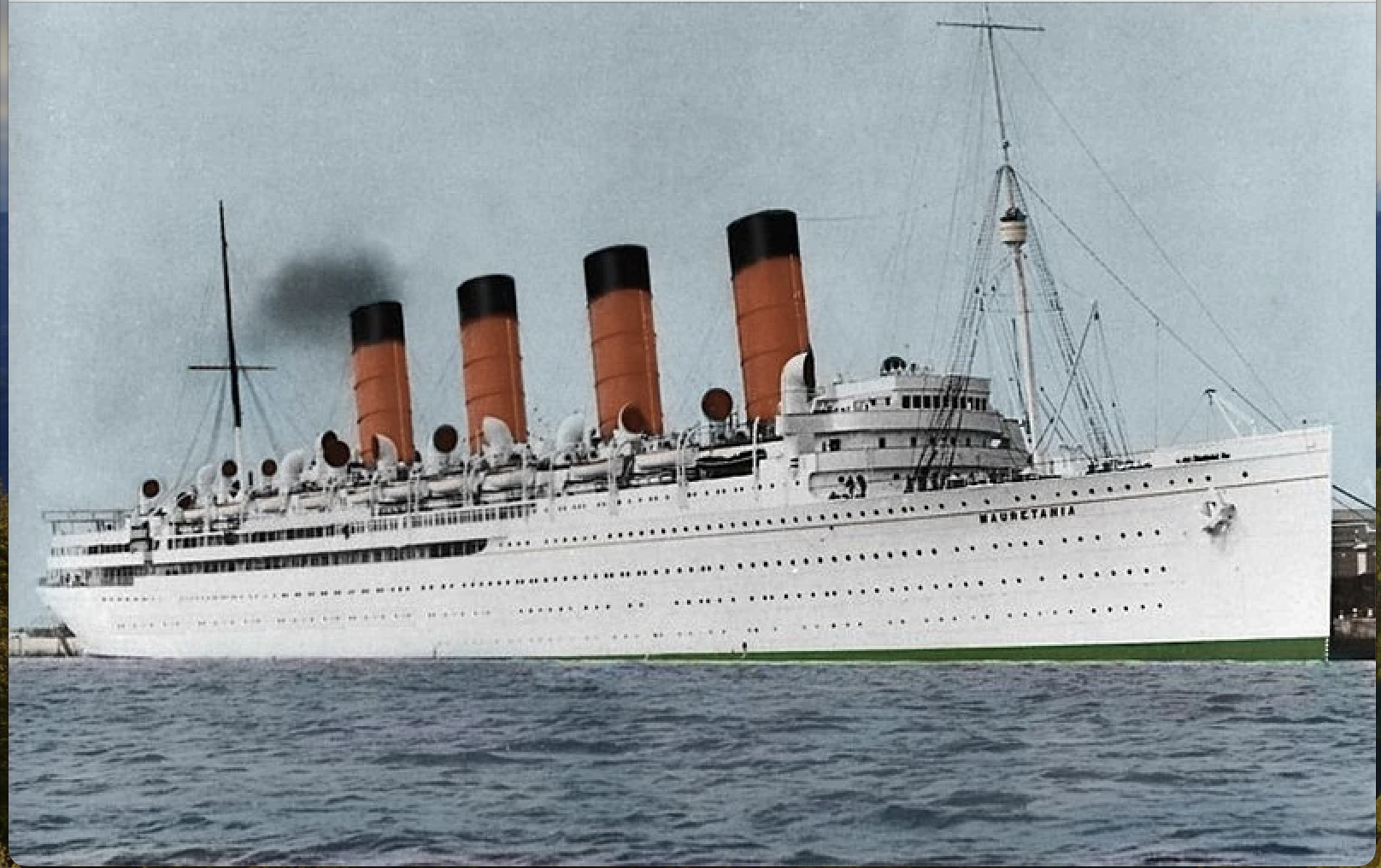ON THIS DAY: 22 September 1909 – RMS Mauretania Wins the Blue Riband Westbound.
The Blue Riband was the unofficial prize for the fastest average speed during a transatlantic crossing, measured in knots. It was not a physical award in that era, but rather a coveted mark of prestige for shipping companies. Eastbound voyages (Europe to New York) tended to be quicker thanks to favourable currents, while the westbound crossings (New York to Europe) were far more challenging due to the Gulf Stream and prevailing winds.
RMS Mauretania, named after the Roman province of Mauretania in North Africa, was one of Cunard Line’s greatest ocean liners. Launched in 1906 and entering service in 1907 as the sister ship of the famous Lusitania, she embodied both power and elegance. Built by Swan Hunter & Wigham Richardson on the River Tyne, she measured 790 feet in length and nearly 31,000 gross tons – making her the largest ship in the world at the time of her launch. Driven by four direct-drive steam turbines designed by Charles Parsons, powering four propellers, she was built not just for speed but also for reliability, giving Cunard the edge against fierce German competition.
On 22 September 1909, Mauretania made history. She set a new westbound Atlantic speed record, averaging 26.06 knots (about 30 mph / 48 km/h) on her passage from Queenstown (now Cobh), Ireland, to Ambrose Lightship, New York. The crossing took just under five days. With this achievement, she became the undisputed holder of the Blue Riband in both directions.
Remarkably, Mauretania would retain both records for nearly 20 years – until 1929 – an extraordinary testament to her engineering. The feat brought Cunard immense publicity, and the ship earned her affectionate nickname: the ‘Grand Old Lady of the Atlantic.’
Her reign finally ended in 1929, when the German liner SS Bremen of Norddeutscher Lloyd claimed the eastbound record in August, averaging 27.83 knots. Later that year, Bremen also captured the westbound record, ending Mauretania’s two-decade dominance.
Beyond her racing glory, Mauretania served with distinction during the First World War as both a troopship and a hospital ship. She later returned to civilian service and continued to carry passengers across the Atlantic until her retirement in 1934.

